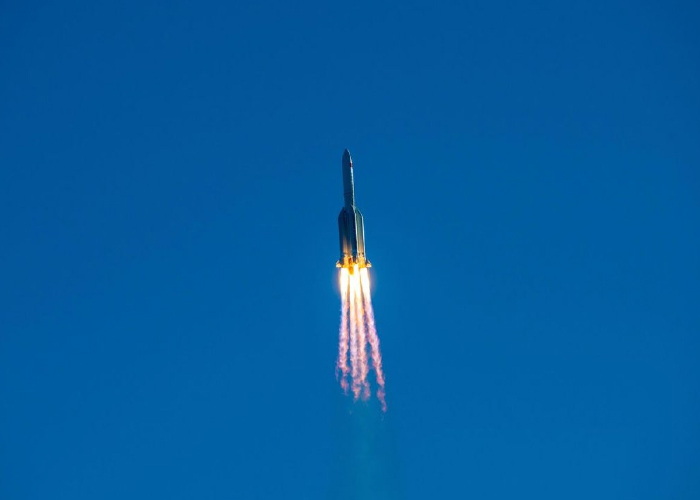Remnants of China’s largest rocket launched last month plunged back through the atmosphere on Sunday, landing west of the Maldives in the Indian Ocean and ending days of speculation over where the debris would hit.
“After monitoring and analysis, at 10:24 [02:24 GMT] on May 9, 2021, the last-stage wreckage of the Long March 5B Yao-2 launch vehicle has reentered the atmosphere,” the China Manned Space Engineering Office said in a statement.
It added most of the components burned up in the re-entry.
US Space command confirmed the re-entry of the rocket over the Arabian Peninsula, but said it was unknown if the debris impacted land or water.
“The exact location of the impact and the span of debris – both of which are unknown at this time – will not be released by US Space Command,” it said on its website.
Monitoring service Space-Track, which uses US military data, also confirmed the re-entry.
“Everyone else following the #LongMarch5B re-entry can relax. The rocket is down,” it tweeted.
“We believe the rocket went down in the Indian Ocean, but are waiting on official data from @18SPCS,” it added in a separate tweet, referring to a squadron of the US Space Force.
US and European authorities had been monitoring the rocket, which was travelling at a speed of 13.7km/second (4.8 miles/second).
The core stage of the first Long March 5B that returned to Earth last year weighed nearly 20 tonnes, surpassed only by debris from the Columbia space shuttle in 2003, the Soviet Union’s Salyut 7 space station in 1991, and NASA’s Skylab in 1979. (Aljazeera)
Home » World » Plunging Back to Earth: Chinese Rocket Makes Re-Entry
Plunging Back to Earth: Chinese Rocket Makes Re-Entry

